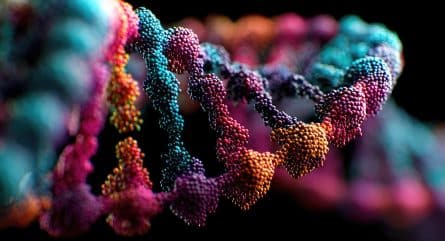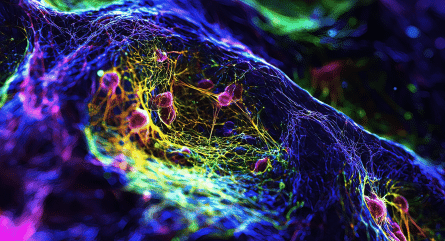The Takeaway: PCR has emerged as a key technology and plays an increasingly important role in next generation sequencing and molecular diagnostics. It's history all started with a country drive...
What is PCR?
PCR, short for polymerase chain reaction, is a method widely used to make thousands, millions, and even billions of copies of a specific DNA sample. This process allows scientists to take a very small amount of DNA and amplify it, which permits easier studying. Sometimes also called molecular photocopying, PCR is fast and inexpensive, and has been called one of the most important scientific advances in molecular biology.
The technology owes its existence in part to a discovery by researcher Thomas Brock in 1969, who found bacteria thriving in the near boiling waters of Yellowstone’s geyser pools. Named Thermus aquaticus, these bacteria can survive temperatures up to 80°C. While several enzymes have been isolated and studied from this organism, none were as significant as Thermus aquaticus DNA polymerase, better known as Taq polymerase.
PCR, an award-winning technology
Although now nearly a household term thanks to its role in COVID-19 testing, PCR technology has been around for several decades. In 1985, Kary Mullis, a Lenoir, North Carolina native, invented the process called polymerase chain reaction. He used heat to separate a DNA molecule’s two strands and the DNA blocks that are bonded to each strand. Using the enzyme DNA polymerase, new DNA chains are created and the process is repeated.
Mullis, who was born in 1944, was awarded the Nobel Prize in Chemistry in 1993 for his work. He died on August 7, 2019 in California. Mullis, who was controversial for some of his personal views, started in science at an early age. He learned how to chemically synthesize and build solid fuel propulsion rockets as a high school student, and later earned a B.S. in chemistry from the Georgia Institute of Technology. He earned a PhD in biochemistry at the University of California, and was published in Nature in 1968. After receiving his doctorate, he left science to write fiction, and also managed a bakery. He then returned to California to serve as the head of a DNA synthesis lab, and it was there that he invented the polymerase chain reaction procedure.
PCR: Breakthrough technique brainstormed during a country drive
As Mullis later said, he got the idea that would become PCR during a drive in Mendocino County, California with his girlfriend. The original idea was to use a pair of primers to bracket a desired DNA sequence to copy it using DNA polymerase. The technique was first formally presented at the American Society of Human Genetics Conference on October 2, 1985, while the first clinical application of PCR, an analysis of sickle cell anemia, was published the same year. Despite the breakthrough, his girlfriend broke up with him.
In its initial form, PCR was tedious and labor intensive. Subsequent improvements allowed for the automation of PCR and soon the first programmable PCR thermal cyclers appeared on the market.
The ability of Taq polymerase to survive the high temperatures required to denature DNA during PCR meant that researchers could perform PCR without having to add fresh polymerase each cycle, a process that saves time and money while also permitting more investigations. Brock’s Taq polymerase discovery enabled PCR to become an indispensable tool in genetics and diagnostics, and liberated researchers from the burden of closely watching PCR reactions.
Nobel Prize for PCR
Mulis shared his 1993 Nobel Prize in Chemistry with Michael Smith, from the University of British Columbia in Vancouver, Canada, “for his fundamental contributions to the establishment of oligonucleotide-based, site-directed mutagenesis and its development for protein studies.”
The Nobel committee at the time noted that there were already many applications of PCR.
“It is, for example, possible using simple equipment to multiply a given DNA segment from a complicated genetic material millions of times in a few hours, which is of very great significance for biochemical and genetic research,” the group wrote in a statement about the prize. “The method offers new possibilities, particularly in medical diagnostics, and is used, for example, for discovering HIV virus or faulty genes in hereditary diseases. Researchers can also produce DNA from animals that became extinct millions of years ago by using the PCR method on fossil material.”
Modern applications of PCR
PCR continues to be applied to emerging threats around the world. The polymerase chain reaction test for COVID-19 is a molecular test that analyzes a patient’s upper respiratory specimen looking for the RNA of SARS-CoV-2, the virus that causes COVID-19. Scientists use the technology to amplify small amounts of RNA from test specimens into DNA, which is replicated until SARS-CoV-2 is detectable—if it is present, that is. The PCR test has been called the gold standard test for diagnosing COVID-19 and was first authorized for use in the U.S. February 2020.
PCR is also being applied to tests to detect food-borne pathogens. A method for molecular detection of Cyclospora cayetanensis, the pathogen linked to sickness from eating tainted greens, was first developed in 2004 but its use was problematic due to a lack of sensitivity, methods that did not allow for discrimination of different species, and a lack of commercially available supplies. More recently, scientists at the US Food and Drug Administration have developed and validated a better method for recovery and ID of C. cayetanensis using PCR in which the produce was washed, DNA were extracted from the wash, and PCR amplification was used to find the "bad" stuff. The test can be used on cilantro, shredded carrots, lettuce, basil, and more.
Today, PCR plays an increasingly important role in techniques such as next generation sequencing, and it will also be important in future molecular diagnostic techniques. More recent technologies that have evolved from PCR include digital PCR, droplet-based digital PCR, chip-based digital PCR, and methods for isothermal amplification. PCR is currently used in point-of-case diagnostic testing, and it is used to perform sample-to-answer operations for the diagnosis of Bacillus anthraxes at U.S. mail stations, and HIV and tuberculosis detection in South Africa.
To learn more about how PCR can be used to advance your research, visit IDT’s PCR and qPCR information pages, where you can also use our PrimerQuest™ Tool to easily design primers or assays for PCR, qPCR, or sequencing for any species.

























